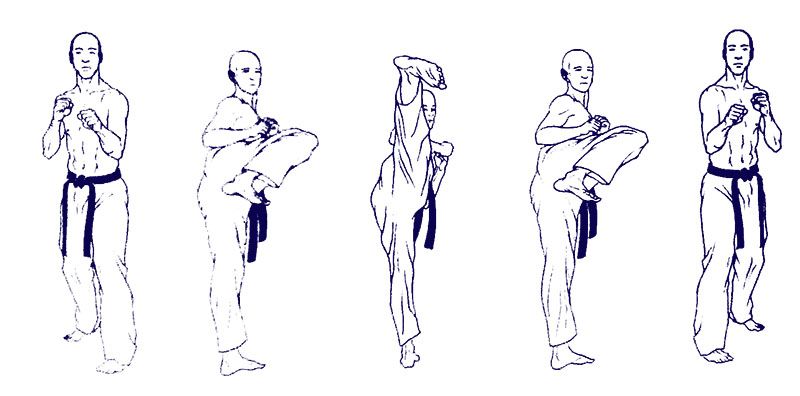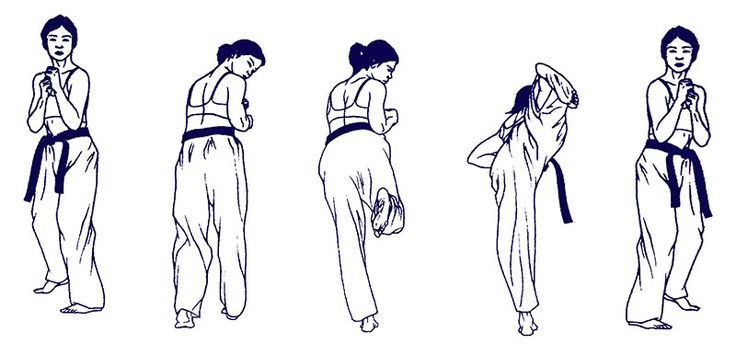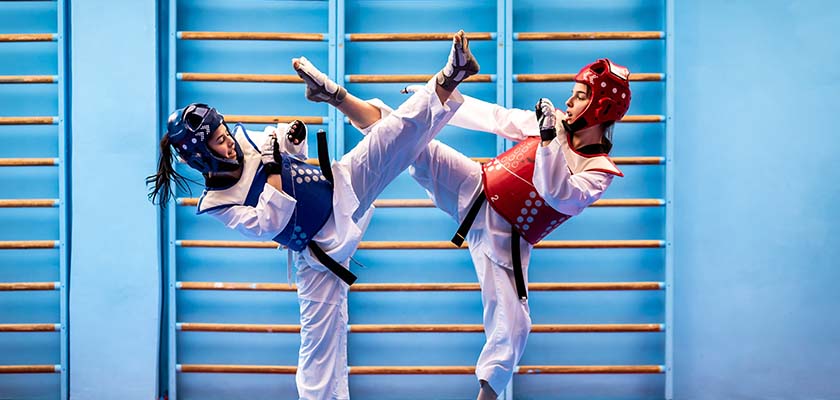Taekwondo is a Korean martial art that stands out for its fast and powerful leg strikes, as well as hand techniques and dodging movements. In this text, you’ll discover the most important facts about the history of this fight, techniques and all the moves of Taekwondo, along with their names, descriptions and scoring information.
History of Taekwondo
Before Taekwondo, there were various forms of martial arts practiced on the Korean peninsula, such as Subak, which dates back to the ancient Korean kingdoms, and Hwarangdo, a military and philosophical training system practiced by the Hwarang, an elite group of young warriors during the Silla Kingdom.
In addition to the physical aspect, Taekwondo emphasizes values such as discipline, respect, humility and self-control. The philosophy is often reflected in the practitioners’ codes of conduct and ethics. Moves of Taekwondo reflect all of this fully.

The training involves a combination of combat techniques, Taekwondo physical conditioning, forms (poomsae), sparring and philosophy.
Practitioners generally progress through colored belts and black belts, with an emphasis on continuous improvement and personal development.
Taekwondo continues to evolve, adapting to social and cultural changes while maintaining its roots in Korean history and tradition.
It’s a dynamic and popular martial art that continues to attract people of all ages all over the world.
Moves of Taekwondo: common techniques
In addition to the Taekwondo strikes that are considered specific, the sport incorporates a variety of techniques that are fundamental to the effective practice of the martial art. Here are some of the most common techniques:
Blocks (Makgi)
These are defensive movements used to intercept or deflect an opponent’s attacks. There are several types of block, including high, medium and low blocks, executed with the forearms, hands or legs.
Punches (Jireugi)
Although Taekwondo is best known for its kicks, punches are also an important part of the practice. There are different types of punches, such as the straight punch (jireugi), cross punch (naeryo jireugi) and hook punch (dwichyo jireugi).
Kicks (Chagi)
Kicks are the most distinctive feature of Taekwondo. In addition to the kicks mentioned above (front, side, circular, etc.), there are variations and combinations of kicks that practitioners learn in order to become more versatile and effective in combat.
Body Positioning (Sogui)
Correct body positioning is crucial for maximizing the effectiveness of blows and maintaining stability during combat. This includes proper posture, balance and fluid movements.
Dodging (Palyeo)
Dodges are defensive movements used to avoid the opponent’s attacks, allowing the practitioner to position themselves in a more advantageous way to counterattack.
Grabs and Knocks (Japgi and Naerimaki)
Although Taekwondo is predominantly a ranged martial art, it also includes grappling and takedown techniques for situations where the fight gets close or goes to the ground.
Breathing (Hohup)
Proper breathing is fundamental to maximizing the efficiency of blows and maintaining endurance during combat. Practitioners learn to synchronize their breathing with their movements to increase power and control.
Combinations (Hyeong)
These are sequences of predetermined movements that practitioners learn as part of their training. These combinations help develop coordination, fluidity and transition skills between different techniques.
These are just some of the basic techniques of Taekwondo. As with any martial art, constant practice and the guidance of qualified instructors are essential to perfect these techniques and achieve a high level of skill;
Now let’s get to know the moves of Taekwondo and how to execute them!
All the moves of Taekwondo
Frontal Kick (Ap Chagi)
- Description: a quick, direct kick with the top of the foot.
- Score: depending on accuracy and strength, it can earn between 1 and 3 points in competitions.

Lateral Kick (Yeop Chagi)
- Description: a side kick with the side of the foot.
- Scoring: similar to the front kick, it can earn from 1 to 3 points.

Circular Kick (Dollyo Chagi)
- Description: a circular kick that aims to hit the target with the top of the foot or the outside of the foot.
- Score: Can earn from 1 to 3 points, depending on the effectiveness of the blow.
Hook kick (Dwijibom Chagi)
- Description: a hook-shaped kick with the top of the foot.
- Score: can earn from 1 to 3 points, like other kicks.
Heel Kick (Dwit Chagi)
- Description: a kick with the heel.
- Scoring: generally not scored in Taekwondo competitions, but can be used to destabilize the opponent.
Scissor Kick (Bandal Chagi)
- Description: a strike in which both legs cross in a scissoring motion, targeting the opponent’s head or neck area.
- Score: can earn 3 to 4 points in competitions, depending on accuracy and effectiveness.
After heel kick (Twimyo Chagi)
- Description: kick executed after a jump, increasing the power of the blow.
- Score: Depending on precision and control, it can earn 3 to 4 points.
Axe Kick (Naeryeo Chagi)
- Description: A downward kick executed from top to bottom, similar to the movement of an axe.
- Score: Can earn 3 to 4 points in competitions.
Wheel Kick (Huryeo Chagi)
- Description: A kick in which the leg moves in a complete circular arc, aiming to hit the opponent with the top of the foot.
- Score: Can earn 3 to 4 points in competitions.
Double Kick (Dobon Chagi)
- Description: Two consecutive kicks, usually with the same leg.
- Scoring: Each shot is scored separately and can earn between 2 and 6 points in total.
As well as the moves of Taekwondo, how about finding out more about other sports? Browse Your Best Game and have fun!
You’ll also enjoy reading these texts below:



